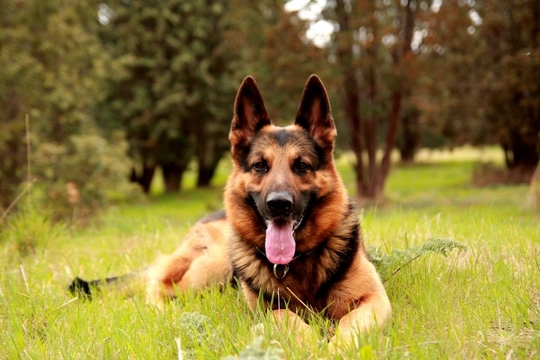
Degenerative spinal myelopathy in the German shepherd
The German shepherd is a large dog breed that is the pet of choice for many in the UK, and this adaptable, versatile dog breed is popular all over the world, both as pets and within working roles too.
However, as is the case for a lot of large dog breeds, German shepherds are at higher risk of developing certain specific conformation problems and health conditions that can be varied and complex, and that in some cases, have a significant impact on the affected dog’s quality of life.
Some of the best-known German shepherd health problems include hip dysplasia, elbow dysplasia, and haemophilia (in male dogs) – but these aren’t the only hereditary health problems that can affect the breed, and there are a number of other less-common German shepherd health issues that owners and potential buyers should be aware of. One of these is called degenerative spinal myelopathy, which is a degenerative condition that affects the dog’s spinal cord, brain and nerves.
As you might expect, this is a serious condition that has a great impact on affected dogs, and it is a good idea for German shepherd owners to learn a little bit about degenerative spinal myelopathy, its symptoms and risk factors.
In this article we will look at degenerative spinal myelopathy in the German shepherd in more detail, to explain the basics of the condition. Read on to learn more.
What is degenerative spinal myelopathy?
Degenerative spinal myelopathy is a progressive health condition that affects the spine of affected dogs, leading to the development of paralysis in the dog’s hind limbs. The degeneration that is the condition’s signature isn’t painful for the dog, but it affects their ability to move freely and will eventually result in paralysis. Sadly, the condition ultimately proves fatal in affected dogs, and cannot be cured or reversed.
Why are German shepherds associated with degenerative spinal myelopathy?
There are a few dog breeds that seem to have higher risk factors than others for degenerative spinal myelopathy, and the German shepherd is just one of them. However, even given this, the condition is neither prevalent nor hugely common across the breed as a whole, and it is not cited as one of the breed’s most common or widely spread health issues.
Degenerative spinal myelopathy is most common in dog breeds with long backs, and the sloped hindquarters of the German shepherd breed, coupled with its large size, increases the risk factors for the condition. It tends to develop in mature and elderly dogs much more commonly than younger dogs of the breed.
What causes degenerative spinal myelopathy in the German shepherd?
The development of degenerative spinal myelopathy in dogs begins with a genetic mutation within a protein coding gene, which helps to modulate and destroy free radicals throughout the dog’s body.
The gene mutation that causes degenerative spinal myelopathy in the German shepherd is hereditary, which means that a dog with the condition can pass it on to their own offspring, furthering its spread within the breed line. There is a DNA test available for the condition to identify if any given dog is clear, a carrier, or affected by the condition, and dogs that are affected should not be bred from; dogs with carrier status may be bred safely with clear dogs, but breeding a carrier with another carrier or an affected dog comes with risks for their future litters.
If a close relative of any given dog has ben diagnosed with degenerative spinal myelopathy, it is wise to have your dog tested if you’re considering breeding from them. Even if you don’t intend to breed from your dog, DNA testing them if they have a close relative with the condition can let you know their risk factors, and what to expect.
Finding out that your dog carries the markers for the “affected” or active form of degenerative spinal myelopathy can be very frightening; but because the condition tends to develop in mature and often, elderly dogs, even some affected dogs may live out their natural lives without problems, if the onset of the condition doesn’t begin to develop within the dog’s lifetime.
What are the symptoms of degenerative spinal myelopathy?
The most common age of onset of degenerative spinal myelopathy in the German shepherd is between 5-8 years old, although it can be even later in some cases.
The first symptoms you might identify at home include a progressive, slowly developing weakness of one of the back legs, which over time will become progressively more acute, escalating to a staggering or uncoordinated gait, dragging the rear paws, and general instability and a tendency to wobble or even fall over when walking.
The progression of the condition usually takes months rather than weeks, and the symptoms are shared with a range of other health conditions too, and so your vet will need to provide a formal diagnosis. Reaching a diagnosis may require x-ray or MRI examination, blood tests, and of course, physical examination.
What can be done for affected dogs?
Degenerative spinal myelopathy can’t be cured or reversed, and so after diagnosis your vet will advise you on the progression of the condition, how it will affect your dog, and how to care for them. Fortunately, degenerative spinal myelopathy isn’t painful for your dog, but it can increase the risk of accidents and injuries due to gait instability, and will ultimately cause paralysis.
When the progression of degenerative spinal myelopathy reaches the point that the dog’s quality of life is no longer appropriate, a decision is usually made to put the dog to sleep to prevent suffering.



